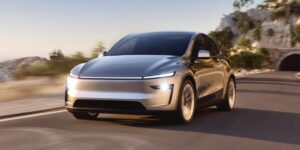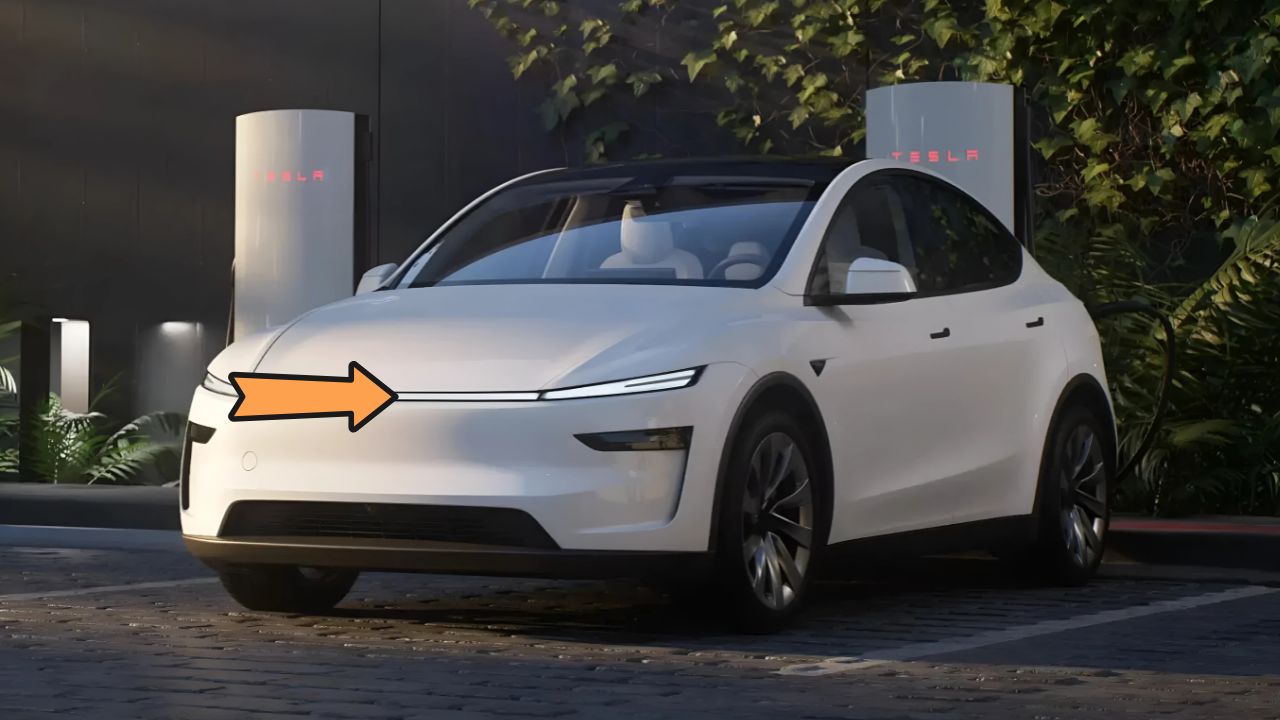The Australian electric vehicle market witnessed a remarkable turnaround in May 2025, with Tesla’s Model Y delivering its strongest monthly performance in over a year. Tesla can thank the Model Y for bringing the company to its strongest monthly performance of the year in Australia. In May, the Model Y accounted for 3,580 of the 3,897 total sales Tesla reported for the month in Australia. That’s a 9.3 percent increase from May 2024, while the Model Y had its best month since June 2024 with a 122.5 percent increase from the same month a year prior.
This surge represents not just a recovery from earlier challenges in 2025, but a testament to the enduring appeal of Tesla’s most popular electric SUV and the impact of strategic improvements in both the vehicle and charging infrastructure that support it.
The Remarkable Recovery Story
The journey to May’s success wasn’t straightforward. Tesla’s April sales numbers for Australia had been the company’s worst performance of the year there. Despite the May rebound, the EV makers’ total sales in Australia remains down 48.2% year-to-date compared with the same period last year. The dramatic shift from April’s dismal 500 total Tesla sales to May’s nearly 3,900 deliveries represents a staggering 675% month-over-month increase.
According to the EVC, there were 3,580 Model Y sales in May, more than double the 1,609 in the same month last year, and its highest level since selling 4,379 vehicles in March, 2024. This performance positioned the Model Y as the undisputed leader in Australia’s electric vehicle segment, maintaining its status as the country’s best-selling EV.
The success story becomes even more impressive when considering the broader context of Tesla’s global challenges in 2025. While Tesla faced declining sales in multiple international markets, Australia emerged as a bright spot, demonstrating the unique dynamics of the local market and the effectiveness of Tesla’s strategic approach to the region.
The Game-Changing 2025 Model Y Refresh
Central to this success is the introduction of the refreshed 2025 Tesla Model Y, internally codenamed “Juniper.” The 2025 update to the Tesla Model Y – codenamed Juniper – brings a fresh Cybertruck-inspired look, a more composed ride and added tech. This wasn’t merely a cosmetic update but a comprehensive enhancement that addressed many of the previous generation’s limitations.
The new model features significant improvements across multiple dimensions. Tesla hasn’t detailed the changes but says the 2025 Model Y has revised suspension that “offers smoother handling, added comfort, more responsive steering and a quieter ride”. These improvements represent Tesla’s commitment to listening to customer feedback and continuously refining their products.
Performance enhancements are particularly noteworthy. The Model Y Long Range has also seen a performance boost, shaving 0.2 seconds off its 0-100km/h time, now completing the dash in 4.8 seconds. Those who opt for the Acceleration Boost software update can reduce that time further, dropping it to 4.3 seconds.
The technological upgrades extend beyond performance metrics. The 2025 Tesla Model Y has a new 8.0-inch rear touchscreen behind the centre console box. Higher quality materials and extra features and technology are found in the new Tesla Model Y. The rear seats in the new Tesla Model Y now fold electronically. These features enhance both convenience and passenger experience, positioning the Model Y as a more premium offering in the competitive SUV segment.
Charging Infrastructure: The Foundation of Success
Tesla’s success in Australia isn’t solely attributed to vehicle improvements; the company’s charging infrastructure expansion plays a crucial role in consumer confidence and adoption. With 60,000+ Superchargers, Tesla owns and operates the largest global, fast charging network in the world. Located on major routes near convenient amenities, Superchargers keep you charged when you’re away from home.
The charging capabilities remain impressive, with Superchargers can add up to 282 kilometers of range in just 15 minutes. Since charging above 80 percent is rarely necessary, stops are typically short and convenient. This rapid charging capability significantly reduces range anxiety, a primary concern for potential EV buyers.
Australia’s charging landscape has seen substantial development. According to data from the Tesla website, Australia hosts 100 Tesla Supercharger locations as of September 2024. These Superchargers provide power ranging from 72kW to 250kW (for newer versions), enabling a standard Tesla Model to gain up to 282 km of range in just 15 minutes.
The strategic expansion continues, with Tesla has announced updates to its supercharger map to help more EV drivers plan for upcoming road trips. The company has updated its existing supercharger map globally to show 30 new sites being planned or under construction in Australia. This expansion represents nearly a one-third increase in the existing network, demonstrating Tesla’s commitment to supporting growing EV adoption.
Opening Networks to All Electric Vehicles
A significant development in Tesla’s charging strategy is the gradual opening of Supercharger networks to non-Tesla vehicles. Select Tesla Superchargers are now open to vehicles outside of Tesla that are NACS-equipped or have NACS DC adapters. This strategic shift acknowledges the broader EV ecosystem while potentially generating additional revenue streams.
Tesla first started opening its Superchargers in 2021 in Europe for all EV models to access and has gradually expanded its pilot locations, including in the United Kingdom. In Australia, this initiative began in early 2023, with more than half opened to non-Tesla EVs, allowing all drivers with compatible vehicles to access Tesla’s reliable charging infrastructure.
The pricing structure for non-Tesla vehicles reflects the additional costs and complexity of supporting diverse vehicle types. Tesla offers a Supercharging membership subscription at $9.99 per month to reduce the charging cost to $0.63/kWh, except Tamworth where it’s cheaper at $0.60/kWh. While slightly more expensive than some competitors, Tesla’s network offers superior reliability and coverage.
Market Leadership and Consumer Confidence
Tesla’s position in the Australian market extends beyond mere sales figures. Tesla has been the dominant player in the Australian EV market over the last few years, with a share of more than 50 per cent of the market. But that has shrunk to just 26 per cent in 2026, and its fall in sales has caused the overall EV market to be stagnant because other car makers have been unable to make up the difference.
Despite the reduced market share, Tesla’s influence on the overall EV market remains significant. The company’s performance directly impacts Australia’s electric vehicle adoption rates, making their recovery crucial for the broader transition to sustainable transportation.
Consumer confidence in Tesla products remains strong, particularly regarding the new Model Y. Tesla Australia country director Thom Drew said demand for the new Model Y was “really good”. The company showcased the updated model at the recent Everything Electric show in Sydney. “We’re in a very happy spot. The response that we had at the event, I think we could easily say it outweighed our expectations,” he said.
The enthusiasm extends beyond industry events to real-world consumer behavior. Drew says Tesla is confident that the Model Y will remain the best selling EV in Australia in 2026 – and the reality is that, despite the April slump, it already is.
Cost Advantages and Economic Benefits
The economic case for Tesla ownership in Australia remains compelling. Compared to an equivalent petrol car, charging a Model Y will yield the following savings per 100 km: Supercharger network will yield a 50 per cent saving… Charging from your own solar system will save you 96 per cent.

These savings become substantial over time. For example, the average Australian who drives 37km a day would save anywhere between $1465 to $2228 per annum, depending on how they charged their electric car. Such economic benefits, combined with environmental advantages, create a compelling value proposition for Australian consumers.
The cost structure varies significantly based on charging methods. Based on this example, the cost of charging a Tesla Model Y RWD costs between $0.60 and $8.20 per 100km, depending on where it is charged. This range reflects the difference between home solar charging and public rapid charging options.
Technological Innovation and Future Outlook
Tesla’s commitment to continuous innovation extends beyond hardware improvements to software capabilities. The integration of charging management features demonstrates this approach. Tesla has recently added a small, albeit useful feature for owners who charge their electric vehicles (EVs) at home, and specifically for those who use third-party chargers… Tesla Model 3 and Model Y owners will now be able to pull and hold the rear left door handle near the charging port for three seconds, at which it will unlatch.
The strategic approach to market expansion includes careful planning based on real-world data. Tesla’s supercharger network has grown considerably over 2024, with over 11,500 new stalls opening in 2024. The year ended with over 67,000 stalls globally with the network delivering over 5.2 TWh of energy over 2024.
Looking ahead, Tesla’s infrastructure development continues to accelerate. In November, the company unveiled its new V4 supercharging cabinets, which will be able to deliver twice the charging speeds of up to 500 kW per stall for compatible cars. These developments suggest that charging times will continue to decrease, further enhancing the EV ownership experience.
Industry Impact and Competition
The success of the Model Y in May 2025 occurred against a backdrop of increasing competition in the Australian EV market. Tesla also said it hit a record breaking 1,545 sales in Turkey last month… Tesla posted a surprise bounce back in Norway, where the Model Y helped it post 213% more vehicles in May from a year ago. These international results suggest that Tesla’s May performance in Australia was part of a broader recovery pattern rather than an isolated incident.
The competitive landscape continues to evolve with new entrants and established manufacturers expanding their EV offerings. However, Tesla’s integrated approach to vehicle development, charging infrastructure, and software capabilities maintains its competitive advantage. The combination of proven reliability, comprehensive charging network, and continuous innovation creates significant barriers for competitors attempting to replicate Tesla’s success.
Charging Forward
Tesla Model Y‘s strongest month in Australia in May 2025 represents more than just impressive sales figures; it demonstrates the maturation of the electric vehicle market and the effectiveness of Tesla’s integrated approach to sustainable transportation. The combination of the refreshed 2025 Model Y with its enhanced features, expanding Supercharger infrastructure, and cost advantages creates a compelling proposition for Australian consumers.
The success story highlights several key factors: the importance of continuous product improvement, the critical role of charging infrastructure in EV adoption, and the value of listening to customer feedback. As Tesla continues to expand its charging network and refine its vehicles, the May 2025 performance may well represent the beginning of sustained growth rather than an isolated peak.
For the Australian electric vehicle market, Tesla’s recovery signals positive momentum toward broader EV adoption. With infrastructure continuing to expand and vehicle capabilities improving, the foundation is being laid for sustainable transportation to become mainstream across Australia. The Model Y’s May success charges ahead as evidence that the future of Australian transportation is increasingly electric, and Tesla remains at the forefront of this transformation.

